|
Printables |
PowerPoints |
Online exercises |
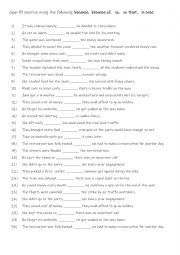
|
A2+-B1+ Gap-fill exercise using the following because, because of, so, so that, in case.
These connectors help link ideas and sentences in a clear and logical way. They show how different parts of a text or conversation relate to each other, which improves overall coherence. In writing, these connectors are vital for structuring arguments, narratives, or explanations. They help in organising ideas logically and making writing more pers...
Level: intermediate
Age: 10-100
Type:
Downloads: 112
|
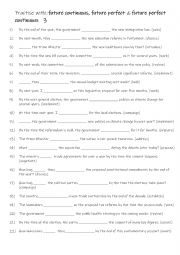
|
B1-B2 Practise with future continuous, future perfect & future perfect continuous 3
Students should learn the future continuous, future perfect, and future perfect continuous tenses to express a variety of future actions and events more clearly. The future continuous describes ongoing actions at a specific future time, the future perfect indicates actions that will be completed before a certain future point, and the future perfect...
Level: intermediate
Age: 10-100
Type: worksheet
Downloads: 135
|
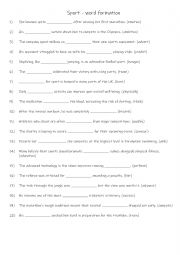
|
B1+ Sport - word formation
Understanding word formation allows students to expand their vocabulary, enabling them to express themselves more precisely and creatively. Knowing how to manipulate words helps them create varied sentence structures, making their writing more engaging and dynamic. Mastering word formation is key to achieving higher levels of language proficiency, ...
Level: intermediate
Age: 9-100
Type:
Downloads: 129
|
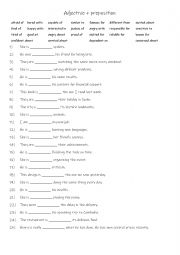
|
A2+-B1 25 Adjective + prepositions
Understanding how adjectives combine with prepositions helps students provide more detailed and precise descriptions. For example, knowing the phrase �interested in� allows you to convey specific interests more clearly.Mastering these combinations contributes to overall language proficiency, allowing you to use English more accurately and confident...
Level: intermediate
Age: 10-100
Type:
Downloads: 117
|
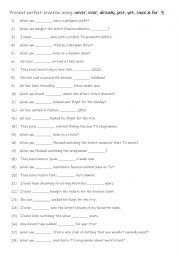
|
A2+-B1 Present perfect practise using never, ever, already, just, yet, since & for 3
First, students need to familiarise themselves with adverbs and their use. Then they read the sentences to see which one is needed to complete the gap-fill. Answers on page 2.
Level: intermediate
Age: 8-100
Type:
Downloads: 116
|
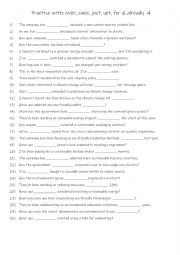
|
A2+-B1 Practise with ever, since, just, yet, for & already 4
First, students need to familiarise themselves with the 6 adverbs and their use. Then they read the sentences to work out which one is needed to complete the gap-fill. Each adverb is used 5 times! Answers on page 2.
Level: elementary
Age: 9-100
Type:
Downloads: 117
|
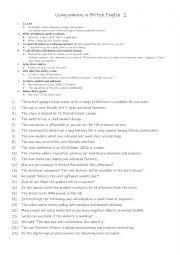
|
Using commas in British English 2
First, students need to familiarise themselves with the 8 reasons why a comma is used. Then they read the sentences and punctuate them accordingly. Answers on page 2.
Level: elementary
Age: 9-100
Type:
Downloads: 112
|
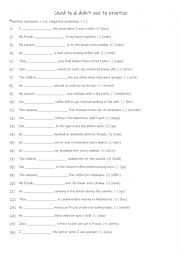
|
A2+-B1+ Used to & didn�t used to
Students complete the sentences using the given verbs. Positive sentences = (+). Negative sentences = (-). There are 13 positive and 13 negative sentences. Answers on page 2.
Level: elementary
Age: 8-100
Type:
Downloads: 129
|
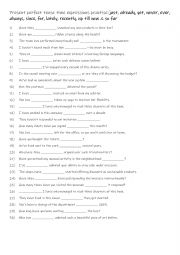
|
B1 Present perfect tense time expressions practise just, already, yet, never, ever, always, since, for, lately, recently, up till now & so far
Learning the Present Perfect tense with time expressions such as just, already, yet, never, ever, always, since, for, lately, recently, up till now, and so far helps students link past actions to the present, describe experiences, and specify time periods. It allows them to express when things happened, how long they�ve been happening, and the rele...
Level: intermediate
Age: 9-100
Type: worksheet
Downloads: 113
|
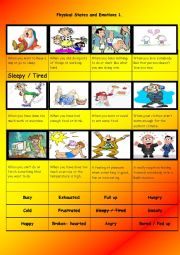
|
Physical States and Emotions Part 1 of 4
Students read the physical state or emotion description then match it to the correct feeling. Part 1 of 2.
PLEASE NOTE:Part 2 will be uploaded for Thursday along with a crossword and word search.
Level: elementary
Age: 8-100
Type: worksheet
Downloads: 287
|
|
|
|
|












